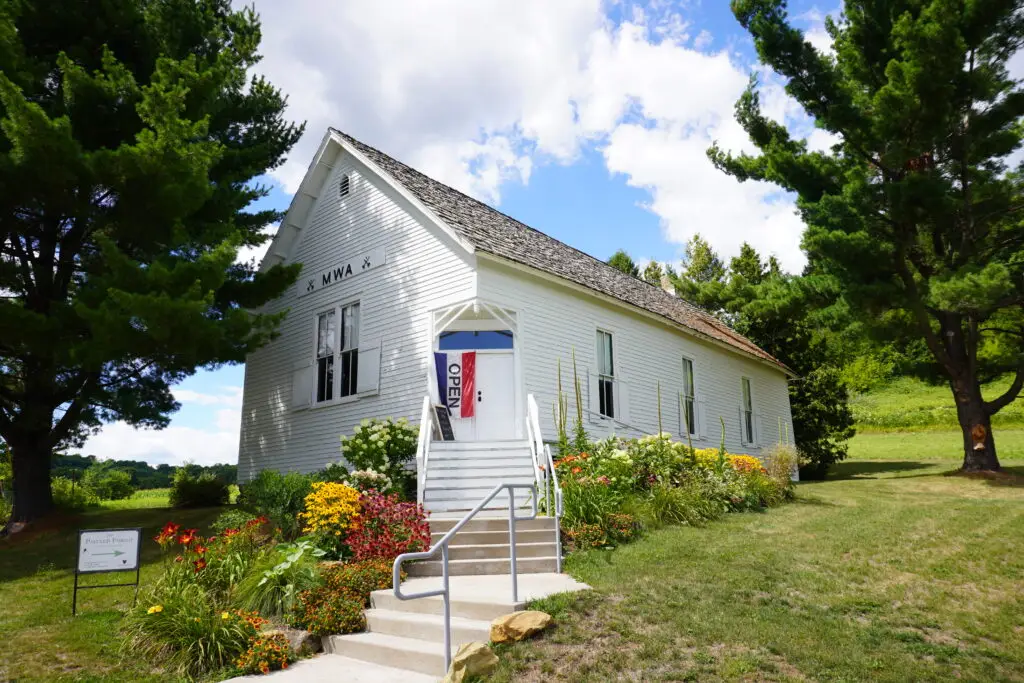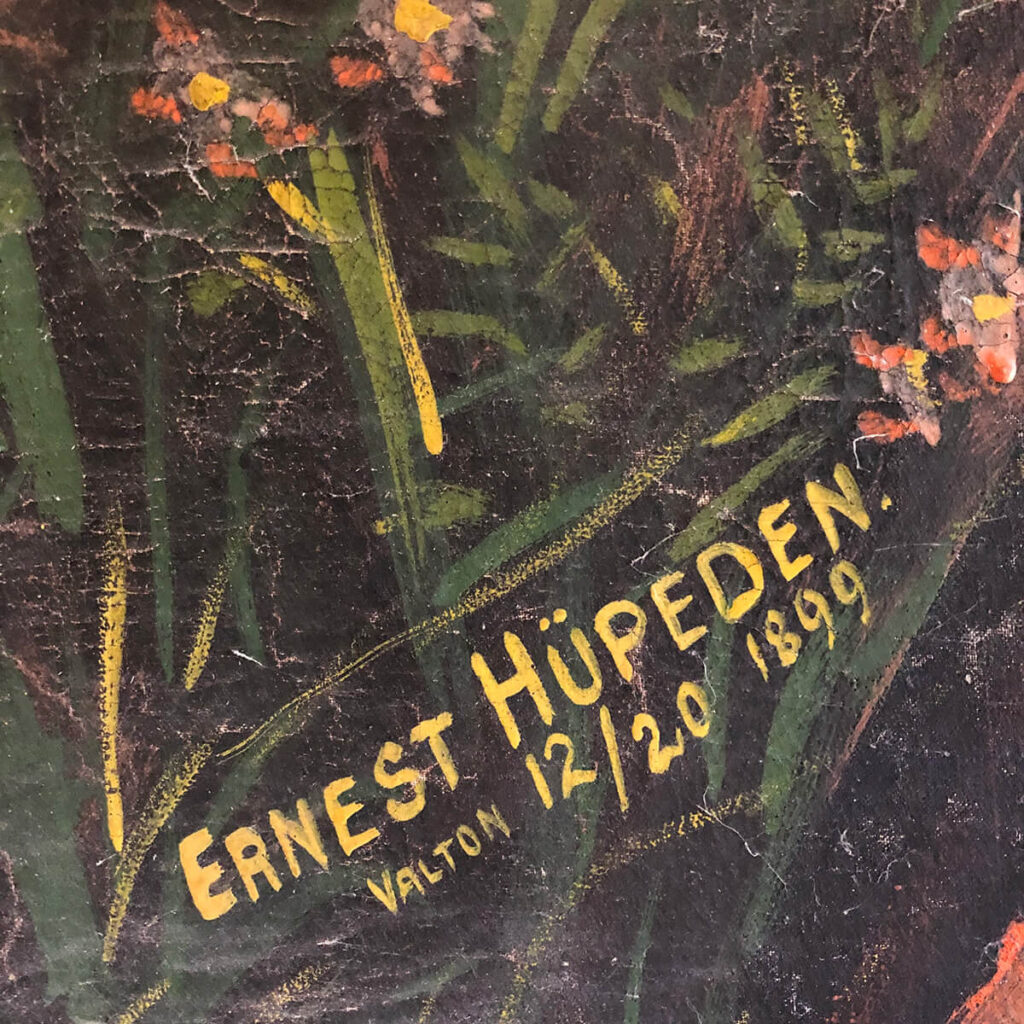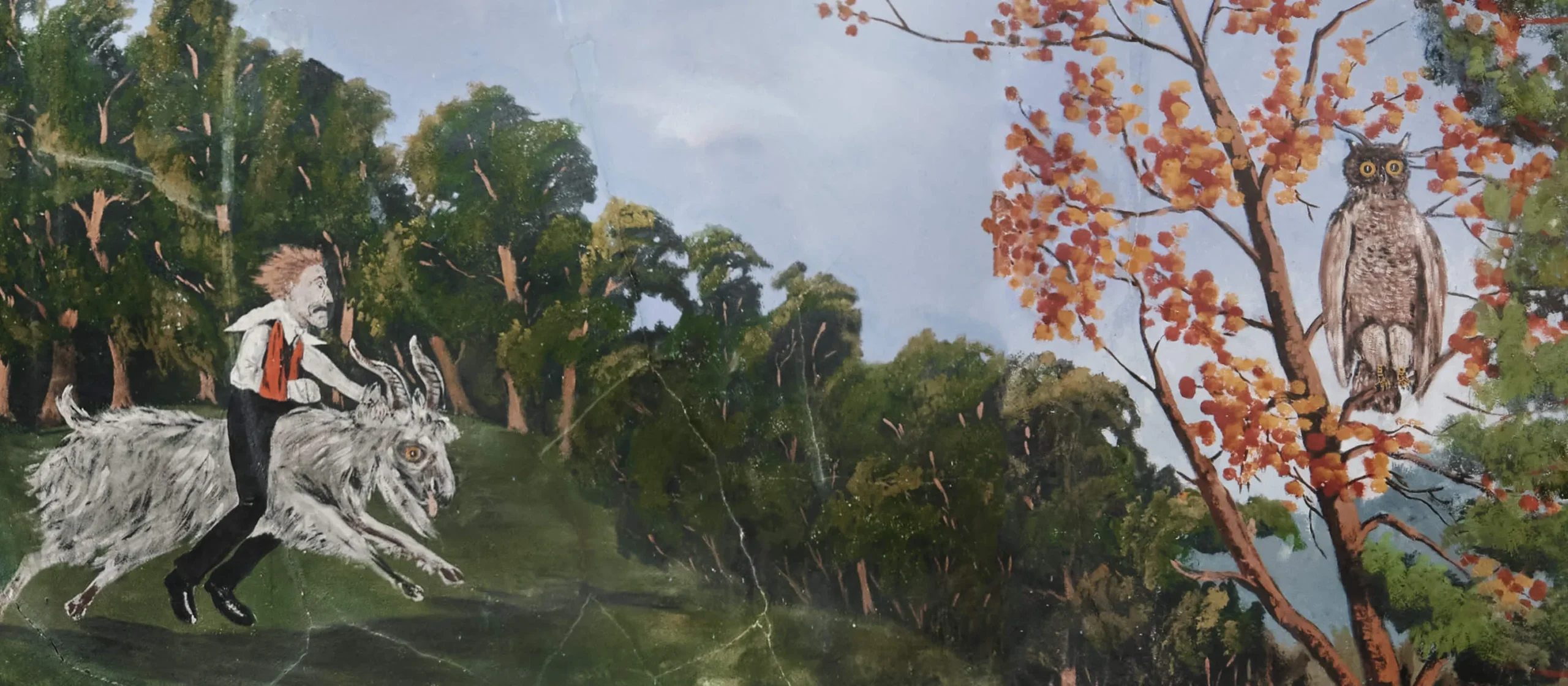
An Artist-Built Environment
celebrating 120 years
Open Weekends
June through Mid-October
Valton, Sauk County, WI

Ernest Hupeden’s Painted Forest
In the small town of Valton, Wisconsin, an unassuming white frame building is built into the hillside. The treasure lies inside, where the walls and ceiling are covered with intriguing visionary murals created in the late 1890s by the itinerant German painter, Ernest Hüpeden. Explore this remarkable artist-built environment: Ernest Hüpeden’s Painted Forest.

Ernest Hüpeden’s Painted Forest
In Valton, Wisconsin, an unassuming white frame building is built into the hillside. The treasure lies inside, where the walls and ceiling are covered with intriguing visionary murals created in the late 1890s by the itinerant German painter, Ernest Hüpeden. Explore this remarkable artist-built environment: Ernest Hüpeden’s Painted Forest.
behind the paintings
The Life of Hüpeden
We know only certain details about Ernest Hüpeden. He grew up in Neuruppin, a garrison town northwest of Berlin, Germany, which had the reputation of being the most Prussian of all Prussian towns. Hüpeden was educated at a university in Germany, where he stoked his lifelong vehemence against the militarism of the Prussian Empire and the rise of the German state.
Perhaps contributing to this apprehension was Hüpeden’s wrongful imprisonment. He was behind bars for nearly seven years before the man who committed the crime — embezzlement at the bank where Hüpeden worked — confessed on his deathbed, and Hüpeden was freed. Ironically, it was during his imprisonment that Hüpeden began painting.
In October of 1878, at age 20, he boarded a ship in Hamburg called the Herder, arriving in New York to start a new life. We strongly believe that like many thousands of other young Germans, Hüpeden came to the United States to avoid the mandatory three-year military conscription for all men in Prussian territory, which was declared in 1862 by King Wilhelm of Prussia.
Hüpeden worked for several years in southern Wisconsin, often exchanging his paintings for lodging and meals. In addition to creating murals inside homes, on the outside of barns, and on other buildings, Hüpeden often painted portraits and landscapes on plates and bottles. It wasn’t until 1897 that his most lasting work began in Valton.

who Were they?
The Modern Woodmen of America
Modern Woodmen of America was one of many fraternal organizations that were very much in vogue in the last part of the 19th century. The metaphor for the name Modern Woodmen of America came from a Sunday sermon, in which the pastor told a parable about pioneer woodmen clearing away forests to build homes, communities and security for their families. The organization’s mission was to help families survive after the loss of a breadwinner.
Support Ernest Hüpeden’s Painted Forest
Make a financial contribution or give your time in order to sustain this important piece of art history.

Volunteer
The arts have long played an important role in the educational traditions of Edgewood University. In October 2004, the Kohler Foundation gifted the Painted Forest to Edgewood University of Madison, Wisconsin. As stewards of this important artist-build environment, the University has pledged to maintain the site and foster its role in educating students, artists, researchers and the general public. The Edgewood University Art Studio and Study Center was constructed in Valton by the Kohler Foundation, Inc. The Study Center provides space for interdisciplinary workshops, lectures, seminars, retreats, performances and artist residencies. The University’s advocacy for partnership and respect for the natural environment promises that its presence in the Valton community and the Upper Baraboo River country will be that of a “good neighbor” for years to come.

Kohler Foundation is committed to the preservation of art environments and important collections, as well as Wisconsin culture and heritage. In the past, Kohler Foundation’s preservation efforts have been focused almost entirely in the state of Wisconsin. However, the Foundation has recently committed to expanding its preservation efforts nationwide. In some cases, artists have transformed their homes and/or their yards into powerful and unique works of art; some have built chapels and grottos, while others created literally hundreds of life-size or over-life-size sculptures and murals that cover entire buildings. Kohler Foundation has initiated and completed many major restorations, among them: The Painted Forest at Valton, Wisconsin; Wisconsin Concrete Park at Phillips, Wisconsin; Mecikalski Stovewood Building at Jennings, Wisconsin; Paul and Matilda Wegner Grotto at Cataract, Wisconsin; Prairie Moon Sculpture Garden and Museum at Cochrane, Wisconsin; and, Nick Engelbert’s Grandview in Hollandale, Wisconsin. Kohler Foundation’s most recent site preservation projects include the Garden of Eden sculpture park in Lucas, Kansas, and the Hartman Rock Garden in Springfield, Ohio. Many of our Wisconsin sites are included in Wandering Wisconsin, a map of art environments in the state.